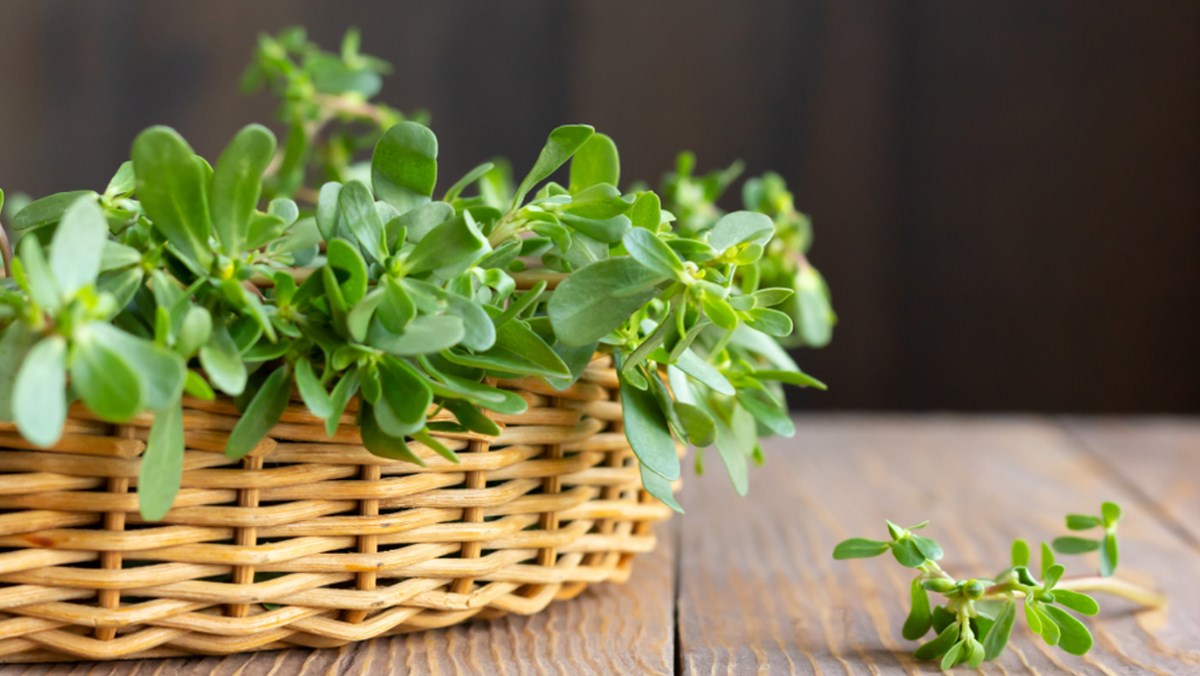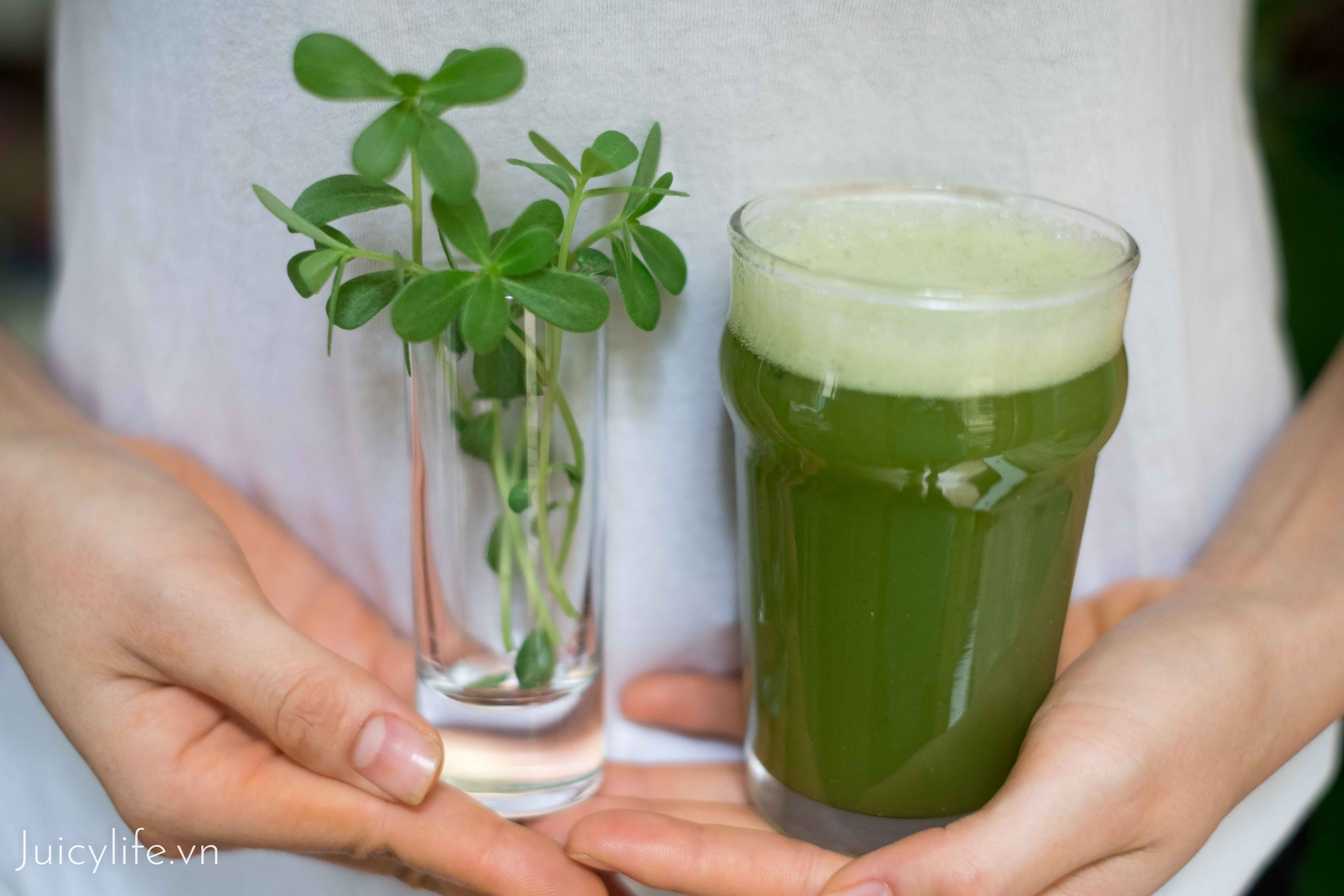Purslane (Portulaca oleracea): The Nutrient-Packed “Weed” That Deserves a Spot on Your Plate
Often mistaken for a common weed, purslane (Portulaca oleracea) is one of the most nutrient-dense leafy greens found in nature. With its crisp, succulent leaves and slightly tangy flavor, this hardy plant is packed with omega-3 fatty acids, antioxidants, and a wide array of vitamins and minerals.
Across history, purslane has appeared in traditional cuisines and herbal remedies from the Mediterranean to Southeast Asia. Today, it’s gaining renewed attention among nutritionists and health-conscious consumers.
1. Botanical Overview
Purslane is a low-growing, drought-tolerant plant with fleshy, reddish stems and small, rounded green leaves. Its tiny yellow flowers bloom under full sun, and it spreads easily in gardens, sidewalks, and even between cracks in pavement.
- Scientific name:Portulaca oleracea
- Other names:Little hogweed, verdolaga, pigweed, Ma-Chi-Xian (China)
- Native regions:North Africa, the Middle East, India, and Southern Europe
- Now naturalized:Worldwide, including the Americas and Australia
What makes it particularly unique is its ability to survive in harsh conditions, using both C4 and CAM photosynthesis pathways — rare among leafy greens.

2. Nutritional Powerhouse
Despite its weedy reputation, purslane outshines many cultivated vegetables in nutrient content.
Macronutrients (per 100g fresh weight)
- Calories:~20 kcal
- Water content:93%
- Carbohydrates:3.4 g
- Protein:2.0 g
- Fat:0.4 g
Micronutrients
- Vitamin A (beta-carotene):Higher than spinach
- Vitamin C:~25 mg
- Vitamin E:~12.2 mg (notably high among greens)
- Folate:Beneficial for cell development
- Calcium, magnesium, potassium, iron, phosphorus:All present in moderate to high levels
Omega-3 Fatty Acids
One of the few vegetables rich in alpha-linolenic acid (ALA), a plant-based omega-3 fat vital for heart and brain health. Purslane also contains trace amounts of EPA, more common in fish oils.

3. Health Benefits
3.1. Anti-Inflammatory & Antioxidant Properties
Purslane is loaded with compounds like flavonoids, betalains, glutathione, and vitamin C — all known for their free radical-fighting effects. Studies show that these compounds may reduce markers of inflammation such as TNF-α and IL-6, contributing to immune system regulation.
3.2. Supports Heart Health
Due to its high omega-3 content, regular intake may help:
- Lower LDL (bad) cholesterol
- Increase HDL (good) cholesterol
- Reduce triglycerides
- Improve vascular elasticity
Clinical trials in humans and animal models support these heart-protective effects.
3.3. May Aid in Diabetes Management
Some small human studies show that purslane seeds can help:
- Improve blood sugar regulation
- Lower insulin resistance
- Support weight and BMI reduction
Its high fiber and antioxidant content are likely contributors.
3.4. Liver Health
Animal studies and limited clinical trials have shown that purslane extracts may improve liver enzyme profiles and reduce fatty liver damage — particularly in those with metabolic syndrome or non-alcoholic fatty liver disease (NAFLD).
3.5. Vision and Skin Support
With abundant vitamin A, beta-carotene, and lutein, purslane supports eye health and may reduce risk of age-related macular degeneration. Vitamin E and flavonoids may also benefit skin repair and resilience.
3.6. Traditional Medicinal Uses
Used historically to treat:
- Diarrhea and digestive issues
- Sore throats and coughs
- Menstrual irregularities
- Inflammation and infections
Though modern science is still validating these uses, many traditional applications show promise in early-stage research.
4. Safety & Considerations
High Oxalate Content
Like spinach and chard, purslane contains oxalates, which in excess may contribute to kidney stone formation. Those with kidney disease or high risk for stones should moderate intake or consume alongside calcium-rich foods to reduce absorption.
Potential Pesticide or Soil Contamination
Wild-harvested purslane may grow in polluted areas or near roads. Always ensure it’s washed thoroughly or sourced from organic gardens or markets.
Pregnancy & Breastfeeding
There’s limited safety data for medicinal doses during pregnancy or lactation, so consult a healthcare provider before using purslane in large amounts or as supplements.
5. How to Use Purslane in the Kitchen
Purslane is versatile and easy to incorporate into many dishes.
:max_bytes(150000):strip_icc()/7688818-6a5216c3988e47e4a0799f66afbb923b.jpg)
Eat It Raw:
- Toss into green salads
- Mix with yogurt or hummus
- Add to cold summer soupslike gazpacho
Cook It:
- Use like spinach in stir-fries, stews, or omelets
- Sauté with garlic and olive oil
- Add to soups — its mucilaginous texture helps thicken broths naturally
Preserve It:
- Pickle itin brine with garlic and vinegar
- Blend into sauces for a nutrient punch
- Dry the leaves and grind them into green powders
Summary Table
Conclusion
Purslane (Portulaca oleracea) is far more than just a common garden weed — it’s a nutritional powerhouse rich in omega-3s, antioxidants, and essential vitamins and minerals. Backed by both traditional use and emerging science, this resilient plant offers potential benefits for heart health, inflammation, blood sugar control, and liver support.
Its versatility in the kitchen and ability to thrive in tough conditions make it a sustainable, low-maintenance supergreen worth including in your diet. Whether eaten raw or cooked, purslane brings both flavor and function to your meals.
Just be sure to wash it thoroughly and avoid harvesting from polluted areas. With proper care, this humble “weed” can become a valuable ally for your health and your garden.
References
- Wikipedia – Portulaca oleracea
- Healthline – 5 Impressive Health Benefits of Purslane
- Health.com – Purslane Benefits and How to Use It
- WebMD – Purslane: Health Benefits, Nutrients per Serving, Preparation Info
- Frontiers in Nutrition – Purslane’s Effects on Inflammation and Liver
- NCBI – Pharmacological Properties of Purslane
- PubMed – Omega-3 and Nutritional Composition
- ScienceDirect – Nutritional and Phytochemical Review
- UF/IFAS Extension – Purslane in Florida Gardens
- ResearchGate – Phytochemical and Medicinal Review